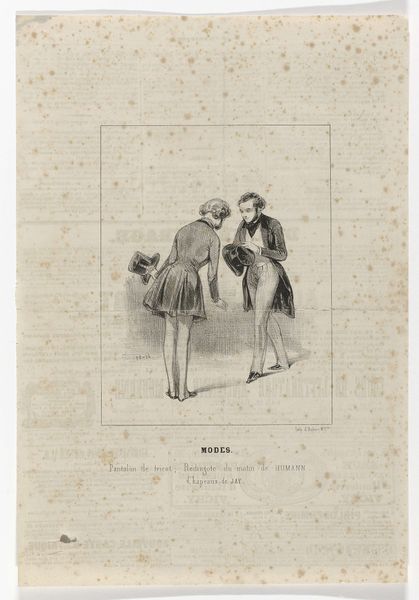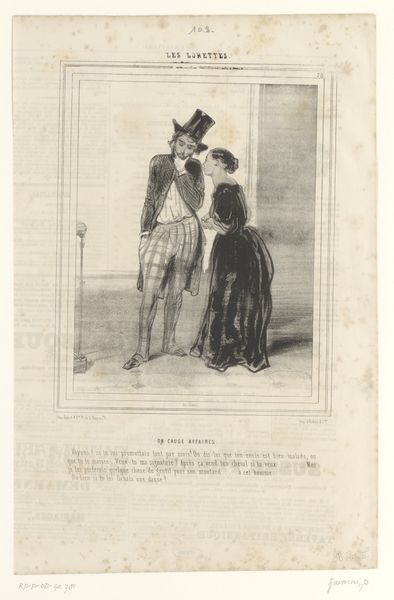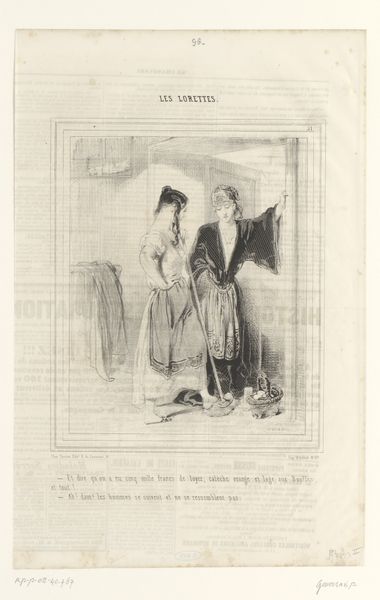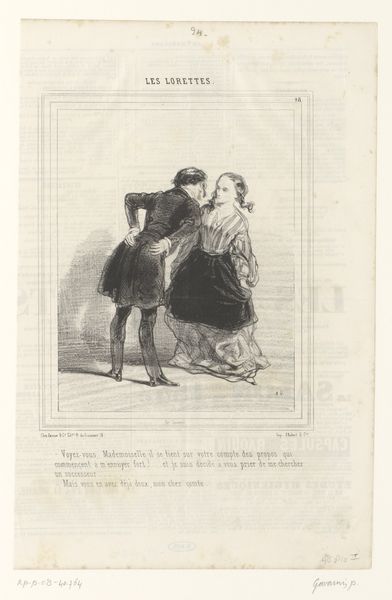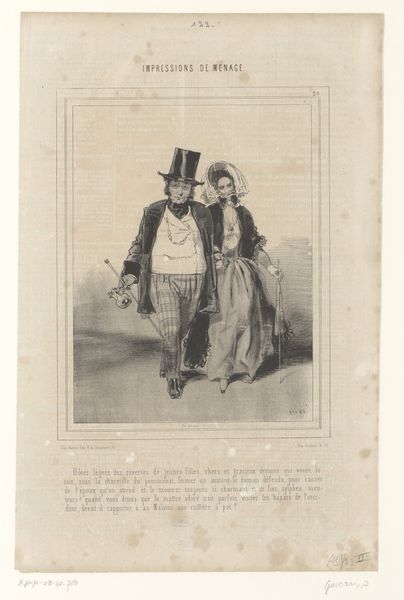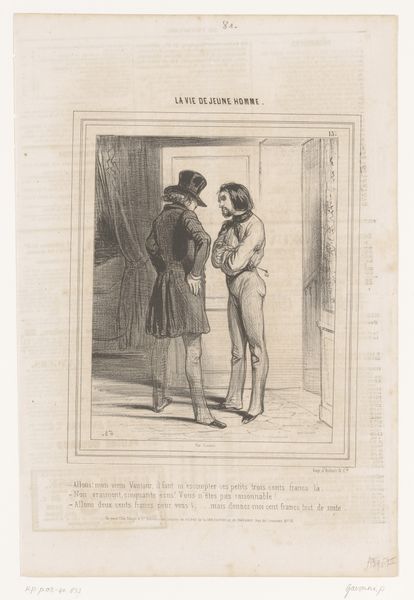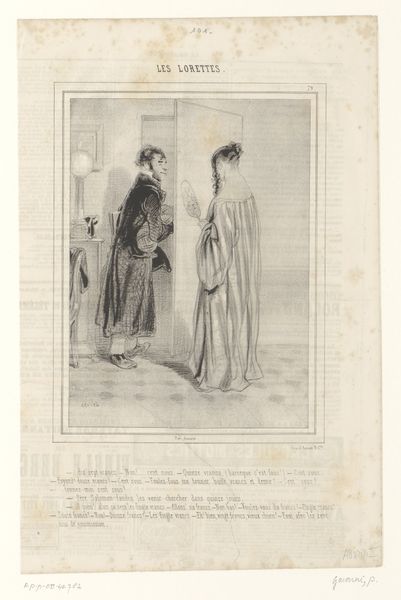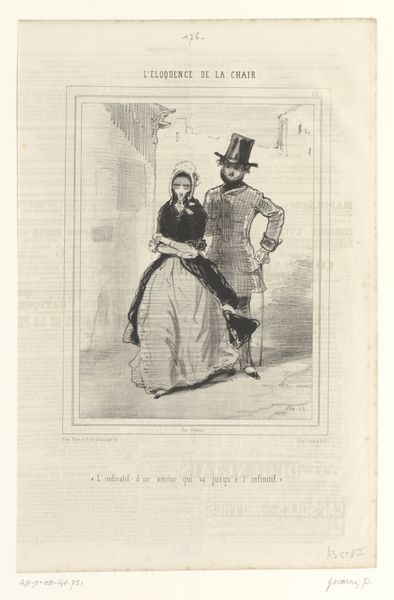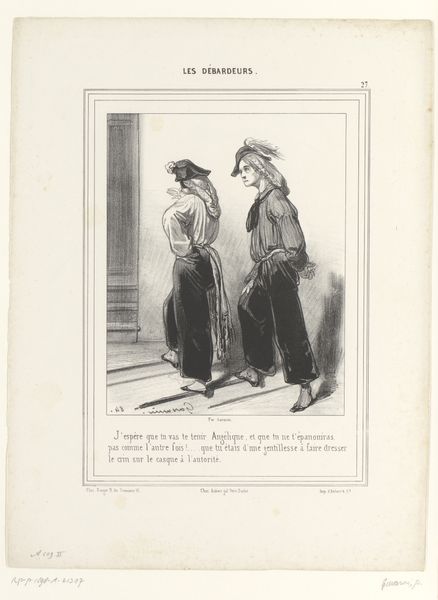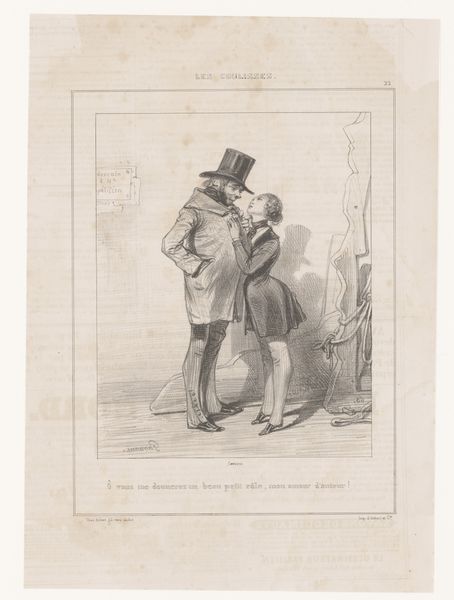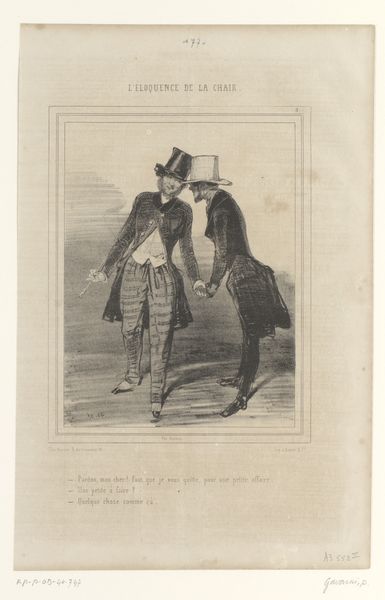
drawing, lithograph, print, pen
#
pencil drawn
#
drawing
#
aged paper
#
toned paper
#
light pencil work
#
lithograph
# print
#
caricature
#
pencil sketch
#
old engraving style
#
personal sketchbook
#
old-timey
#
romanticism
#
sketchbook drawing
#
pen
#
pencil work
#
genre-painting
Dimensions: height 362 mm, width 236 mm
Copyright: Rijks Museum: Open Domain
Editor: This is "Jonge vrouw danst de cancan voor een verklede man," a lithograph made by Paul Gavarni in 1843. The frenetic energy practically leaps off this aged paper! I am wondering what's the real story concerning the manufacturing process here, in regards to its cultural context? Curator: Well, observe the lithographic process – how does the accessibility of printmaking shift art's role in society? Lithography allowed for mass production. How might this impact our understanding of "high" art versus popular culture at the time? Editor: I guess it cheapened art... making it available for popular consumption instead of being solely for the rich... Like fast fashion? Curator: Exactly. Consider Gavarni's choice of lithography. How does it democratize the image, moving it from exclusive ownership to broader accessibility and impacting the artist's role? Editor: So, the image, because of its very production and wide reach, begins to act differently within the social fabric. Curator: Precisely. Think about the societal norms reflected and perhaps challenged by this dance. The materiality, being ink on paper, becomes almost secondary to the social commentary it delivers due to its distribution, don't you think? How would such a piece alter views, provoke questions of class and leisure? Editor: It sounds like focusing on lithography and how these prints are made changes our ideas about what art should be. It's about the world and getting the message out... Thank you! Curator: And seeing how production reshapes perception, it certainly provides richer analysis, doesn’t it?
Comments
No comments
Be the first to comment and join the conversation on the ultimate creative platform.
